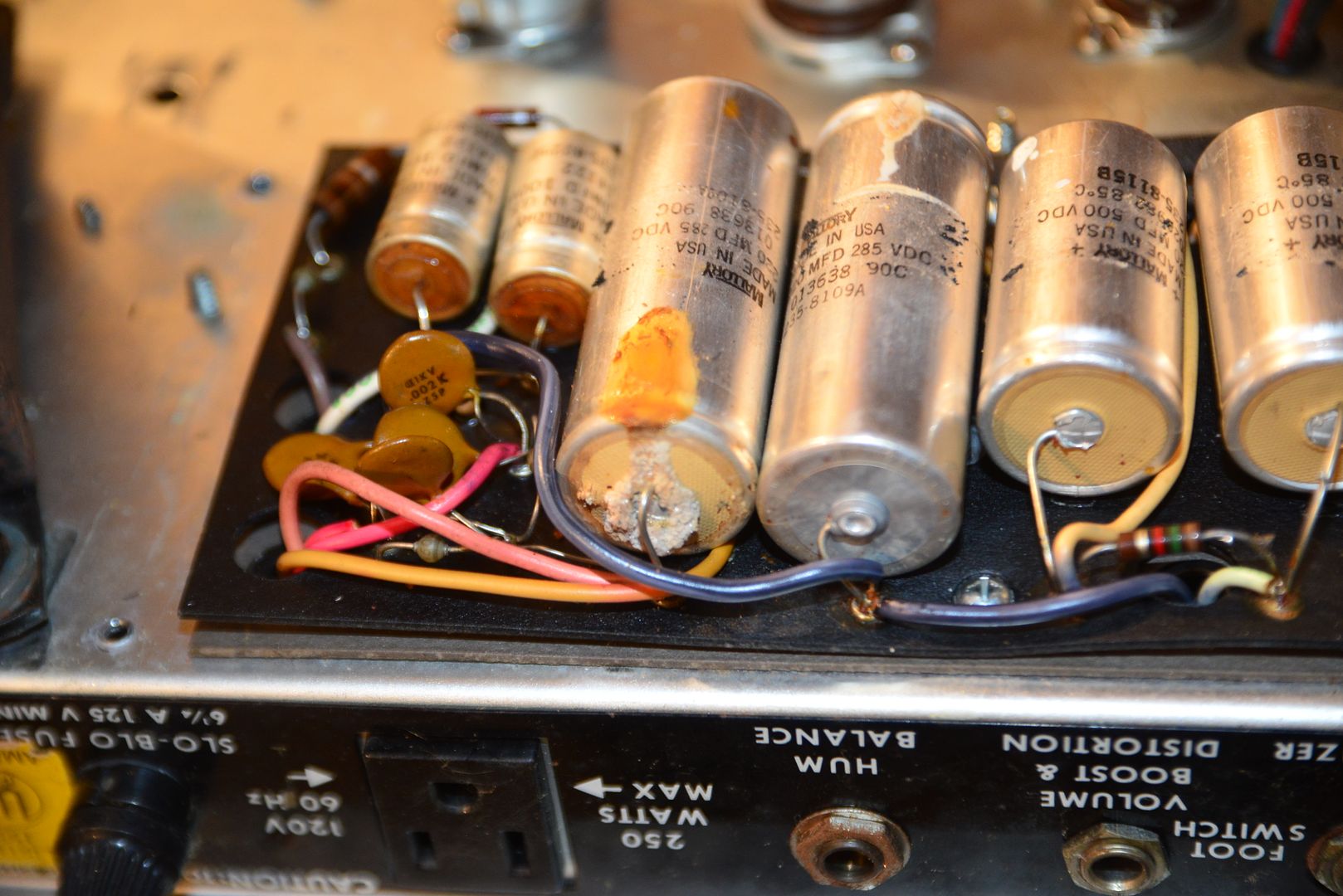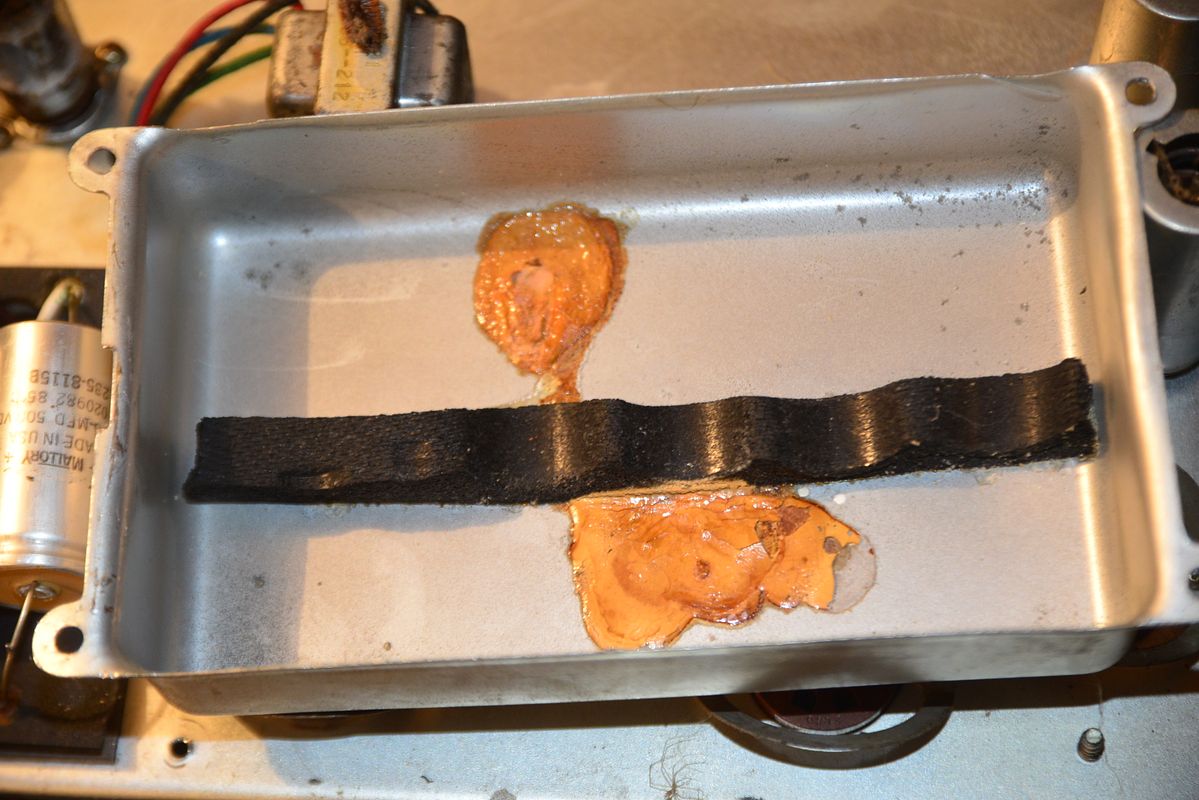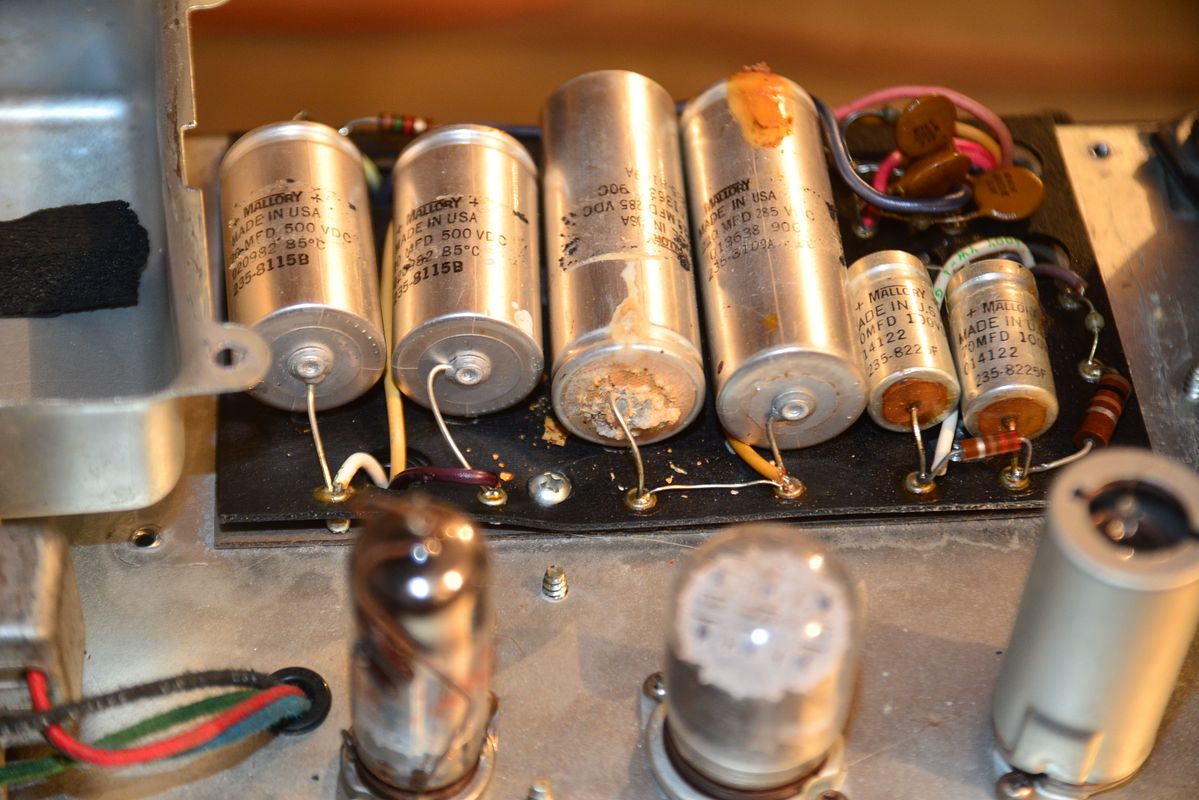woodbutcher65
Well-known member
- Joined
- May 4, 2018
- Messages
- 615
- Reaction score
- 241
This amp came into my possession today for a song...or more like a couple of licks. Cheap enough, at any rate.
It's a Fender Super Twin. 180 watts in a Twin sized package. Never known for having a good overdrive tone, but notorious for its ability to push out that clean Fender tone at absurd volume levels.
I suspected this amp has never been serviced and it's in fairly rough shape BUT quite restorable. Turns out I was right. Internally it appears absolutely untouched since the day it left the factory.
The capacitors are original. Date codes 1981 and 1982 which is consistent with the date of manufacture of this amp.
See for yourself how these capacitors have puked their guts out.



In a state like this the capacitors are electrically shorted and IF the amp was run in this state, then power transformer damage is quite possible.
Fortunately, this amp shows no signs of having been turned on or plugged in while in this state. No blown fuses and no evidence of arcing or transformer damage.
My plan for this amp is to turn it into the most savage of beasts: A Mark IIC+ hiding in a Fender chassis. :twisted:
You see, this model has a 5 band EQ but it uses rotary knobs instead of sliders. Revoicing the EQ and rebuilding the amp to follow the Mark IIC+ schematic will be a fun and involved project.
Let me be clear about this: Your amplifier has capacitors in it much like this one does. Those capacitors have a limited working life.
It's actually going to be longest if the amp is used more, and shortest if the amp is put in storage and ignored for a long time.
The industry rule adopted by those who know capacitors is "five year shelf life, ten year operating life" and beyond that point, the probability of failure is mostly a function of how much time the capacitor spends in operation at its rated voltage. It actually lasts longest when it's kept energized at its designed voltage rating.
But no matter what, they won't last forever. I would say that MOST of the time the caps in a Mesa amp are going to be good for 20 years but after 20 years you're beginning to gamble against increasingly bad odds as time goes on. It's a gamble you don't want to lose because failed caps can lead to large repair bills.
All caps will have date codes on them. Usually it's a 4 digit code of which the last 2 digits are the year of manufacture. The first 2 are the number of the week of that year. So 2099 would be a cap made on the 20th week of 1999.
I'd say that if the date code is before 2000, replace those caps. If it's before 1990, replace them NOW.
It's a Fender Super Twin. 180 watts in a Twin sized package. Never known for having a good overdrive tone, but notorious for its ability to push out that clean Fender tone at absurd volume levels.
I suspected this amp has never been serviced and it's in fairly rough shape BUT quite restorable. Turns out I was right. Internally it appears absolutely untouched since the day it left the factory.
The capacitors are original. Date codes 1981 and 1982 which is consistent with the date of manufacture of this amp.
See for yourself how these capacitors have puked their guts out.



In a state like this the capacitors are electrically shorted and IF the amp was run in this state, then power transformer damage is quite possible.
Fortunately, this amp shows no signs of having been turned on or plugged in while in this state. No blown fuses and no evidence of arcing or transformer damage.
My plan for this amp is to turn it into the most savage of beasts: A Mark IIC+ hiding in a Fender chassis. :twisted:
You see, this model has a 5 band EQ but it uses rotary knobs instead of sliders. Revoicing the EQ and rebuilding the amp to follow the Mark IIC+ schematic will be a fun and involved project.
Let me be clear about this: Your amplifier has capacitors in it much like this one does. Those capacitors have a limited working life.
It's actually going to be longest if the amp is used more, and shortest if the amp is put in storage and ignored for a long time.
The industry rule adopted by those who know capacitors is "five year shelf life, ten year operating life" and beyond that point, the probability of failure is mostly a function of how much time the capacitor spends in operation at its rated voltage. It actually lasts longest when it's kept energized at its designed voltage rating.
But no matter what, they won't last forever. I would say that MOST of the time the caps in a Mesa amp are going to be good for 20 years but after 20 years you're beginning to gamble against increasingly bad odds as time goes on. It's a gamble you don't want to lose because failed caps can lead to large repair bills.
All caps will have date codes on them. Usually it's a 4 digit code of which the last 2 digits are the year of manufacture. The first 2 are the number of the week of that year. So 2099 would be a cap made on the 20th week of 1999.
I'd say that if the date code is before 2000, replace those caps. If it's before 1990, replace them NOW.



